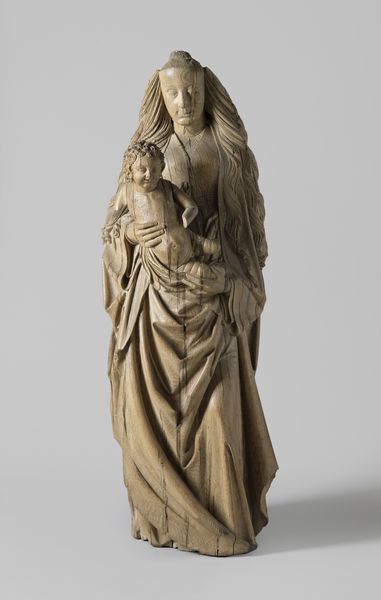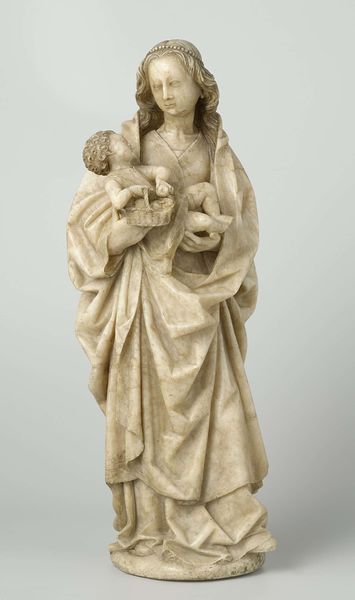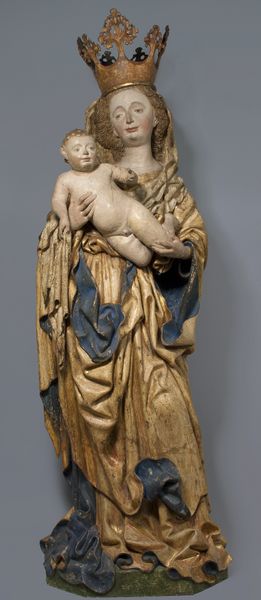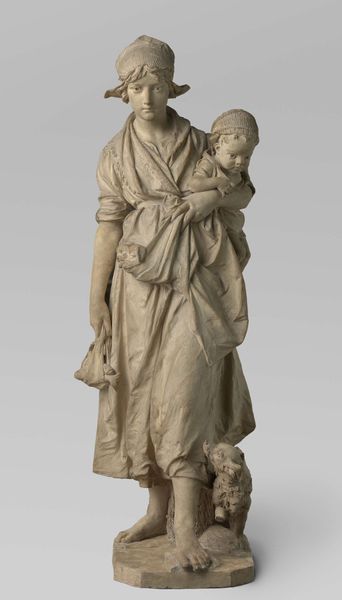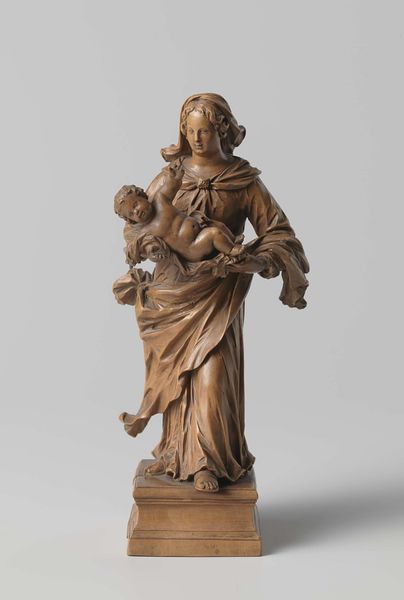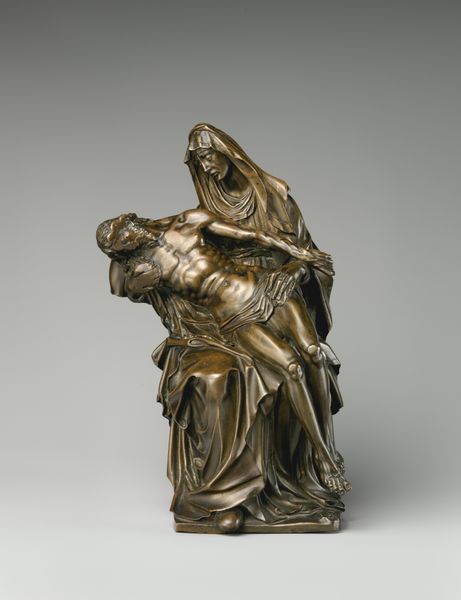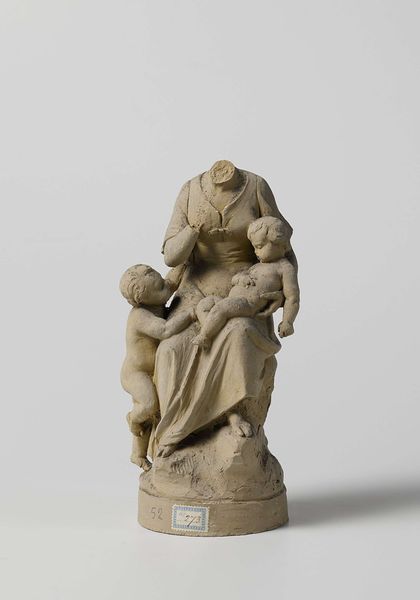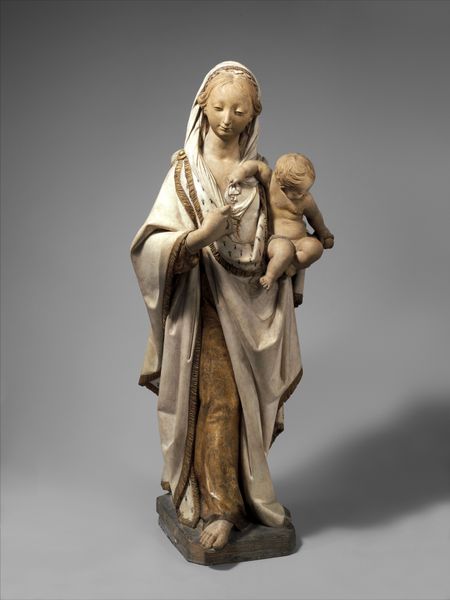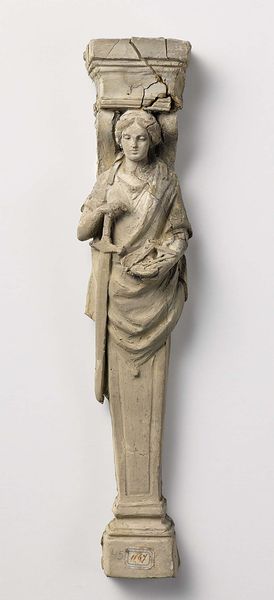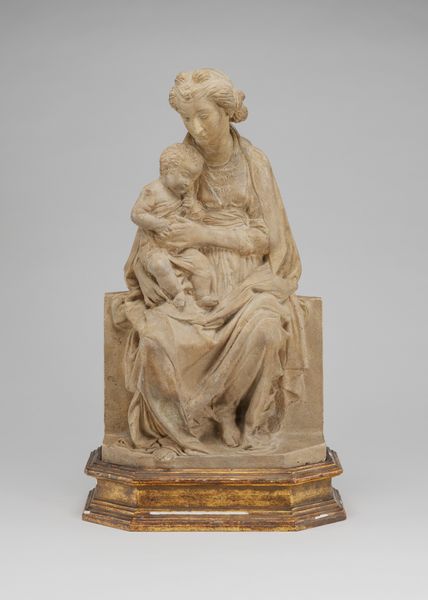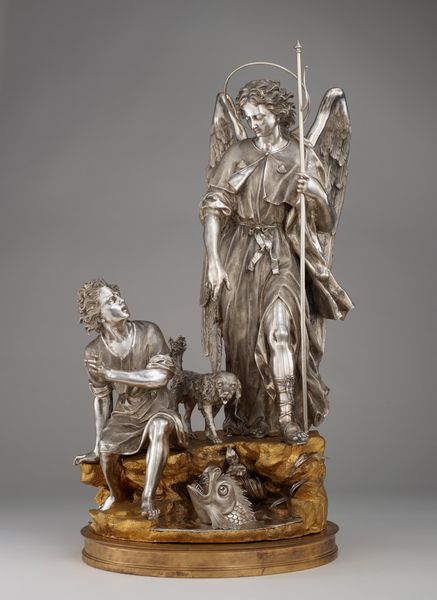
sculpture, wood
#
portrait
#
sculpture
#
figuration
#
sculpture
#
wood
#
northern-renaissance
Dimensions: height 55 cm, width 18 cm, depth 14 cm
Copyright: Rijks Museum: Open Domain
Adriaen van Wesel carved this limewood sculpture of the Virgin and Child sometime between 1460 and 1490. The work embodies the prevalent religious and social attitudes toward motherhood during the late medieval period in the Netherlands. The Virgin Mary's serene expression and nurturing pose reflect the idealized view of women as caregivers and symbols of purity within the family. The sculpture was likely commissioned by a wealthy patron or religious institution, reflecting their devotion and status. The consumption of religious art at the time also served to reinforce social hierarchies, with the Church wielding immense cultural power. Studying guild records, religious texts, and patronage documents will help us to understand the artwork's original context. This helps us reveal the complex social dynamics that shaped its creation and reception. Art is contingent on the social and institutional contexts.
Comments
rijksmuseum about 2 years ago
⋮
Adriaen van Wesel was one of the most important woodcarvers of the northern Netherlands, known far beyond his hometown of Utrecht. His work includes large altars for churches in Delft, Zwolle, ‘s Hertogenbosch and Utrecht. The majority of Van Wesel’s surviving work is preserved in the Rijksmuseum.
Join the conversation
Join millions of artists and users on Artera today and experience the ultimate creative platform.
